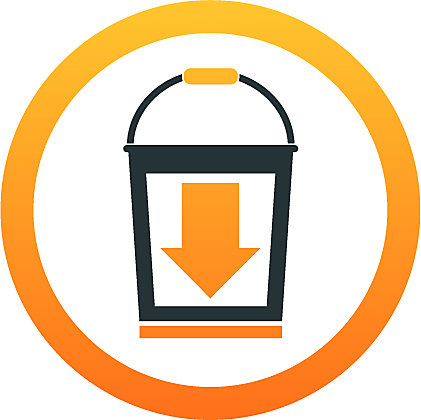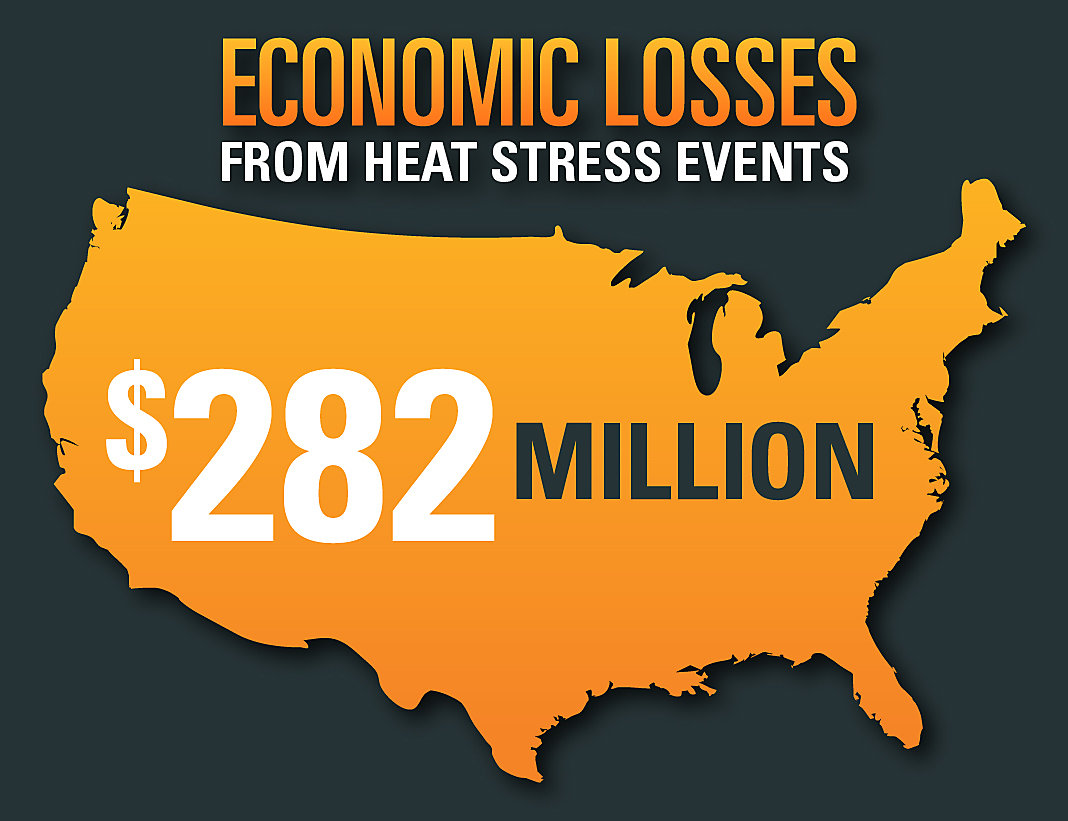Reduce feed intake
You are viewing United States
- United States
- Canada
- Mexico
- South America
- EMENA
- Sub-Saharan Africa
- Russia
- South Asia
- Asia Pacific
- China
- Global
Choose Your Location:
- United States
- Canada
- Mexico
Popular Searches
- Animal Nutrition & Health
- KemTRACE® Chromium
- KemTRACE® Chromium for Beef Cattle
- Minimize the Impact of Heat Stress on Feedlot Cattle with KemTRACE® Chromium
MINIMIZING THE IMPACT OF HEAT STRESS IN YOUR FEEDLOT
Heat stress in cattle can compromise the health and performance of your cattle in several ways1:


Reduce growth

Reduce feed efficiency
HEAT STRESS = ECONOMIC LOSSES
Energy that's expended to compensate for the impact of heat stress decreases the amount of energy available for productive purposes, including daily gain, immune system efficiency and protein accretion.
With estimated total annual economic losses from heat stress in finishing cattle averaging $282 million,2 the economic impact of a heat stress event cannot be overstated.
While many think of mortality as the greatest profit loss, the economic loss from reduced dry matter intake and decreased production is much higher than the direct financial loss from cattle mortality — estimated to exceed 5-10 times that of the death loss.3

FACTORS CONTRIBUTING TO HEAT STRESS
A combination of two or more of the following environmental factors are leading causes of heat stress in feedlot cattle4:
- High ongoing minimum and maximum ambient temperatures
- Recent rain event
- Absence of cloud cover with a high solar radiation level
- Low or no air movement over an extended period (4-5 days)
- High and ongoing relative humidity
- Sudden change to adverse climatic conditions (lack of an adaptation period)
Highest risk factors5:
- After several days of high temperatures and high humidity with low air movement and limited nighttime cooling
- Cattle near finishing weight
- Higher performing cattle
- Newly arrived cattle
- Sick cattle
- Transported and handled animals

The cattle's core temperature peaks approximately two hours after the environmental temperature peaks and takes four to six hours to lower to normal temperature.6 The beef cattle temperature-humidity index (THI) chart demonstrates the risk level in planning cattle handling during the summer months.6 Download this THI chart to evaluate the risk to your operation.
CHROMIUM HELPS COMBAT HEAT STRESS
Chromium supplementation helps with heat stress in two ways:
- Chromium helps improve the glucose utilization in animals. By enhancing the availability of glucose, the animal has more energy to help with maintenance, growth, performance and immunity.
- During stress, cattle release a hormone called cortisol. This release alters how nutrients are utilized by the animal. Chromium supplementation has been shown to decrease the levels of cortisol in the blood, thereby alleviating the negative effects of stress on growth and performance.7-10
Data dive:
Immunity and the impact of chromium
Feedlot cattle are often faced with immune challenges, such as heat stress, that demand increased energy efficiency to prevent sickness. Treatment for sick cattle can cost upwards of 50 U.S. dollars per head in addition to the loss in performance and carcass quality.11 Research conducted at Texas Tech University suggests that supplementing the diet with chromium propionate enhances performance and immunity responses in receiving cattle.12
THE RESULTS?
Supplementation of chromium can help increase average daily gain by 11.0% and reduce the need to treat cattle by 71.1%.

NOT ALL CHROMIUM IS ALIKE
KemTRACE® Chromium — the first product of its kind on the market — is a water soluble, highly bioavailable, organic source of chromium propionate that helps stabilize insulin receptors in cattle. This improves glucose utilization for increased energy and proper cell function, resulting in better immunity.
KemTRACE Chromium is supported by more than 20 years of Kemin research and is the only U.S. Food and Drug Administration-reviewed for of chromium propionate. See the KemTRACE Chromium mode of action at work.

Ready to see how chromium can help your herd beat the heat?
Start with these resources.
Literature

Video
Dr. Lance Baumgard
Professor of Nutritional Physiology
Iowa State University
Click to watch the adjacent presentation recording by Dr. Lance Baumgard to learn more about gut health and efficient nutrient utilization in cattle during stress.
References
1Hahn, G. L. (1999). Dynamic responses of cattle to thermal heat loads. Journal of Animal Science. 77:10-20.
2Mader, T. L., J. M. Gaughan, and B. A. Young. (1996). Feedlot diet roughage level of Hereford cattle exposed to excessive heat load. Laboratory Animal Science Professional. 15:53-62.
3Mader, T. L. (2012). Strategies to mitigate heat stress possible. Feedstuffs. 84:12.
4Sullivan, K. F. and T. L. Mader. (2018). Managing heat stress episodes in confined cattle. Veterinary Clinics of North America: Food Animal Practice. 34:325-339.
5Sparke, E. J., B. A. Young, J. B. Gaughan, M. Holt, and P. J. Goodwin. (2001). Heat load in feedlot cattle (report). Meat and Livestock Australia Limited.
6Eirich, R. (2014). Handling cattle through high heat humidity indexes. University of Nebraska- Lincoln. beef.unl.edu/handling-cattle-through high-heat-humidity-indexes.
7Puvadolpirod S., J. P. Thaxton. 2000. Model of physiological stress in chickens 1. Response parameters. Poult. Sci. 79:363-369.
8Alejandro, C.-I., et al. 2014. Environmental Stress Effect on Animal Reproduction. Open Journal of Animal Sciences, 4, 79-84.
9Miller, D.B., et al. 2002. Neuroendocrine Aspects of the Response to Stress. Metabolism. Vol 51:5-10.
10Mirfendereski, E., R. Jahanian. 2015. Effects of dietary organic chromium and vitamin C supplementation on performance, immune responses, blood metabolites, and stress status of laying hens subjected to high stocking density. Poultry Science 94:281–288.
11Fike, G. D., L. R. Corah, M. E. King, and W. D. Busby. (2008). Effect of health treatments on feedlot performance, carcass traits and profitability of beef calves fed in the Iowa Tri-County Steer Carcass Futurity (report). Certified Angus Beef LLC and Iowa State University.
12Bernhard, B. C., et al. (2012). Chromium supplementation alters the performance and health of feedlot cattle during the receiving period and enhances their metabolic response to and lipopolysaccharide (LPS) challenge. Journal of Animal Science. 90:3879-3888.
Have a Question?
If you have a question about our products or services, or just want more information, fill out the form below and someone on our team will be in contact with you.
- California Residents
- California Supply Chain Act
- Canada Forced Labor and Child Labor Report
- Email Disclaimer
- GDPR Personal Data Addendum
- General Terms & Conditions for Vendors
- Global Environmental Policy Statement
- Indirect Cost Estimates
- Kemin Terms & Conditions
- Modern Slavery Act Transparency Statement
- Privacy Policy
- Sitemap
- Change Cookie Consent
- Animal Welfare Statement
© Kemin Industries, Inc. and its group of companies All rights reserved. ® ™ Trademarks of Kemin Industries, Inc., USA
Certain statements may not be applicable in all geographical regions. Product labeling and associated claims may differ based upon government requirements.
